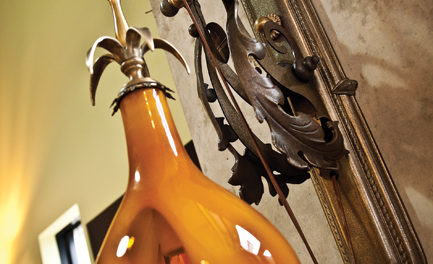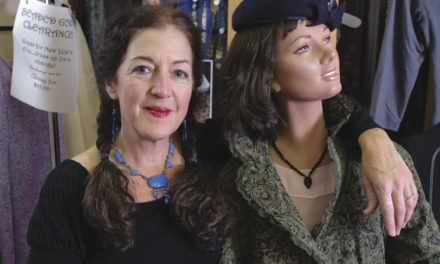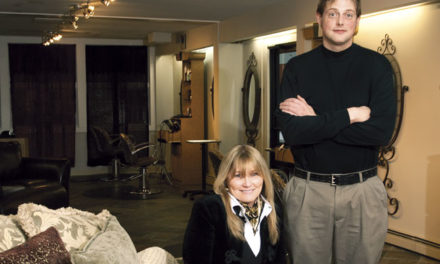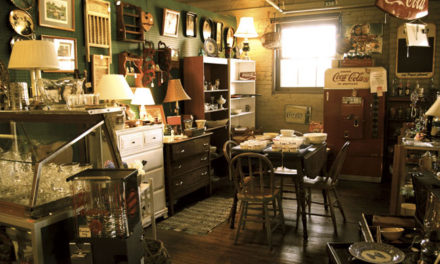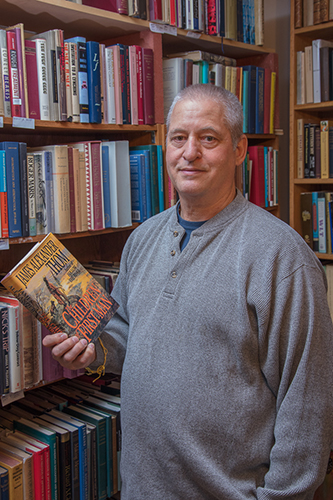
Dale Steffey, seller of rare books. Photo by James Kellar
BY OLIVIA DORFMAN
Dale Steffey is one of the rare few who has managed to turn his passion into a profession. A couple of times. The 65-year-old native of Shelbyville, Indiana, came to Bloomington to study at Indiana University, and graduated in 1975 with a degree in secondary education. However, he was working at Trilogy Gallery in Nashville, Indiana, when he became interested in the art of stained glass—and in artist Dawn Adams, who became his wife. So instead of teaching, he worked with Adams as a glass artist for 30 years.
About 15 years ago, Steffey began frequenting estate sales, garage sales, and library sales, following his instinct for finding unusual books. At first, he supported his collecting by scouting books for dealers, who paid him 20–25 percent of a book’s value. Then the stock market slumped. “People weren’t buying art,” he says. “I needed to do something else.”
That’s when his wife suggested selling books to collectors, not wholesalers. Steffey doesn’t have a brick-and-mortar store, however. “With the internet, your store is open 24/7, all over the world,” he says. He lists his venture, Dale Steffey Books, on several websites, paying monthly fees plus 15–20 percent commission on each book sold.
While his early collecting focused on mysteries, science fiction, literature, and poetry, his catalog now includes works in U.S. history, art, architecture, and academic fields. Recent finds include a Phi Delta Theta fraternity magazine from 1874, and a set of 1960s’ Avant-Garde magazines. The most expensive books are valued at $5,000 to $10,000, but the average is around $140.
“In the book business, it’s all about condition and edition,” he explains. And knowing what to look for. At a garage sale, he paid a dollar for a signed, first edition of James Dickey’s Deliverance, worth $200 to the right buyer. A leather-bound, limited-edition of The Adventures of Huckleberry Finn, which cost him $1,500, sold for $6,500.
It often takes Steffey years to recoup his investment. “It is not a highly profitable venture,” he maintains. But there was that first edition of Moby Dick he found at an estate sale outside of Bloomington. “It was the most expensive book I’ve sold—nearly $20,000,” he says. “But that was only once.”


